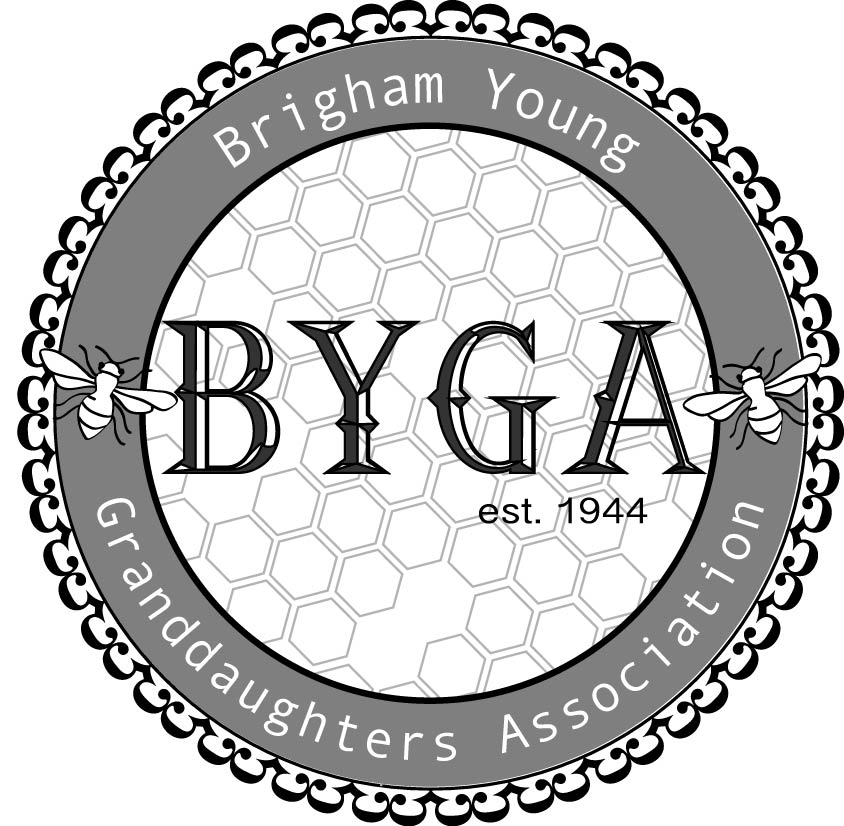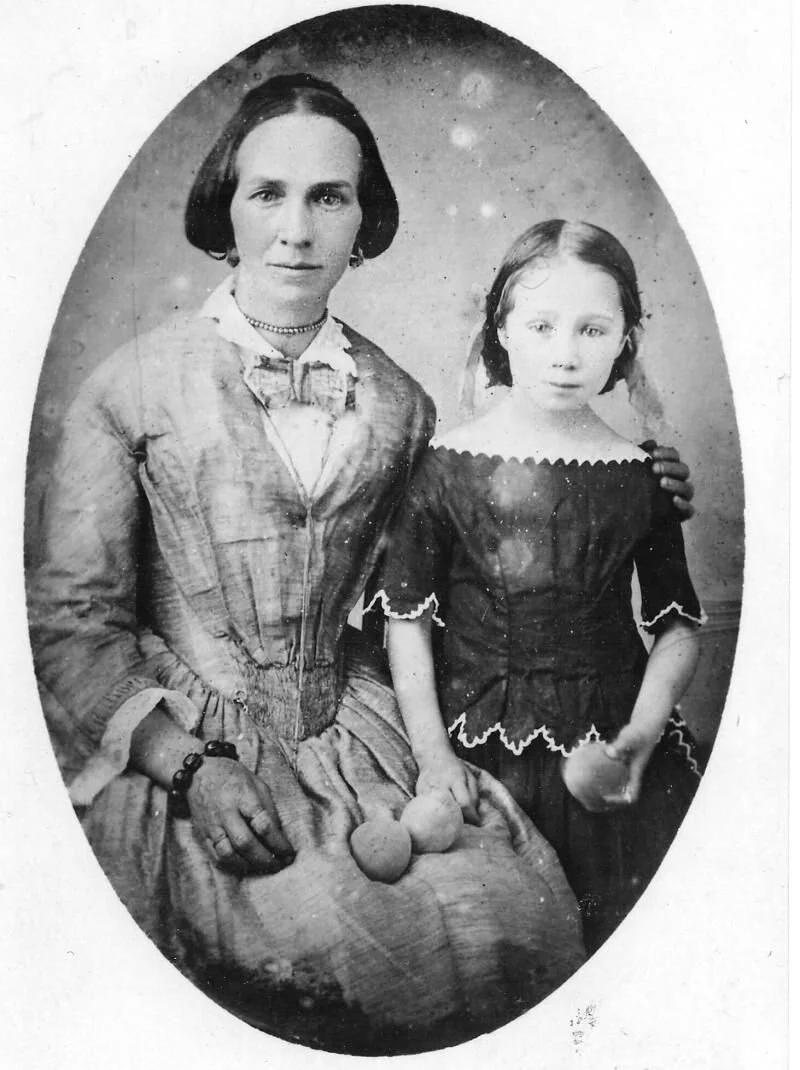Zina Diantha Huntington was born January 31, 1821 to William and Zina Baker Huntington in Watertown, Jefferson County, New York. She was the ninth of eleven children. Her ancestors were Puritan emigrants “who sailed for America in 1633.” (1)
“In my earliest reading of history,” she recalled, “I used to muse while watching the consuming back log in our old fashion fireplace why I could not have been born in a day when something was going on in the nations of the Earth, not that I wished to see distress, but some enterprise.” (3)
“At the time when Zina was wishing for “enterprise,” as she called it, she was a girl living with her parents in a comfortable story-and-a-half stone house on a three-hundred-acre farm in Watertown, New York. Her father, William Huntington, Jr., had cleared the land himself. And he and his wife, Zina Baker, with their large family enjoyed a life that was peaceful, fairly prosperous, and—as Zina apparently thought—a little dull. By the time young Zina Huntington reached her midteens, however, she and her whole family had plunged headlong into one of American history’s most dramatic enterprises—the restoration of the gospel of Jesus Christ and the subsequent exodus of the early Saints.” (2)
The Huntington family heard the message of the Restored gospel of Jesus Christ from Hyrum Smith and David Whitmer in 1835. Most of her family accepted the message right away, but Zina chose to accept after the following experience.
“One day on my return from school, I saw the Book of Mormon, that strange, new book, lying on the window sill of our sitting-room. I went up to the window, picked it up, and the sweet influence of the Holy Spirit accompanied it to such an extent that I pressed it to my bosom in a rapture of delight, murmuring as I did so, ‘This is the truth, truth, truth!’” (4)
Zina was 15 years old when she was baptized by Hyrum Smith on August 1, 1835. “The Huntington’s conversion was absolute, their dedication unconditional. Wholeheartedly, they followed the Saints from Kirtland, through the Missouri persecutions, on to Nauvoo, and eventually to the Valley of the Great Salt Lake.” (2)
While living in Kirtland, Ohio in the year 1835, Zina received the gift of tongues, the gift of interpretation, and joined the Kirtland Temple choir. “On one occasion in the Kirtland temple, she heard a whole invisible choir of angels singing, till the house seemed filled with numberless voices. (1)
While enduring the hardships of Missouri and Illinois, her mother died “from fatigue and privation.” (1) During this time, the whole family fell victim to cholera. “In a few days all our prospects were blighted, our mother dead, ourselves all sick and our crops going to waste, weeds choking them. … None attended [mother’s] funeral but John and William.” (5)
About a year and a half after her mother’s death, at the age of 20, she married Henry Bailey Jacobs. “This not proving a happy union, she subsequently separated from her husband.” (1) She and Henry had two sons together. Joseph Smith taught Zina the “principle of marriage for eternity, and she accepted it as a divine revelation, and was sealed to the Prophet Joseph for time and eternity.” (1)
After Joseph Smith was martyred, she was married for time only to Brigham Young on February 2, 1846. Days later, she left with others of the Saints and crossed the Mississippi river on the ice. She was nearing the end of her pregnancy with her second son as they left.
In March, 1846, she gave birth to her son, Henry Chariton Jacobs on the banks of the freezing river, Chariton. She described her experience as follows:
“I had been told in the temple that I should acknowledge God even in a miracle in my deliverance in woman’s hour of trouble, which honor had now come. We had traveled one morning about five miles, when I called for a halt in our march. There was but one person with me—Mother Lyman, the aunt of George A. Smith; and there, on the bank of the Chariton, I was delivered of a fine son. On the morning of the 23rd Mother Lyman gave me a cup of coffee and a biscuit. What a luxury for special remembrance! Occasionally the wagon had to be stopped, that I might take breath. Thus I journeyed on. But I did not mind the hardship of my situation, for my life had been preserved, and my babe seemed so beautiful.” (7)
Her father, William, was called to be the branch president at Mt. Pisgah and Zina, with her two little boys, lived with him for a time. There was so much sickness in the camp that death became rampant. William was one of the many who died in that place.
From there, Zina and the children traveled on to Winter Quarters and joined with the rest of the Brigham Young family. She traveled across the plains with them, helping to drive teams and cooking on the campfires. Once they arrived in the Salt Lake Valley, they lived in tents and wagons until log houses could be built.
She and Brigham had one daughter together, Zina Presendia. “She also reared Brigham Young’s four children by his wife Clarissa Chase when Clarissa died. ‘They were never anything but my own,’ she lovingly declared.” (2)
Zina was a member of the Relief Society in Nauvoo. In Salt Lake, she served as her close friend Eliza R Snow’s first counselor. “Some have called these two women the ‘head and heart of the women’s work in Utah.’ Another prominent woman explained: ‘Sister Snow was keenly intellectual, and she led by force of that intelligence. Sister Zina was all love and sympathy, and drew people after her by reason of that tenderness.’” (2) As part of her calling the the general Relief Society presidency, she embarked on extensive travels to speak to and counsel with the sisters in Relief Society organizations in the scattered settlements across Utah and neighboring territories.
She was made president when the Deseret Silk Association was organized in June 1876. “Although she abhorred worms, Zina faithfully tended cocooneries at the old Forest Dale Farm as part of her prophet-husband’s silk manufacturing enterprise when Brigham Young embarked upon home industries.” (2)
Zina was always anxiously engaged in good causes. She took a course in obstetrics and directed the school of obstetrics in Salt Lake City in the 1850s. She was highly skilled in the medical field. She served as a midwife, helping to safely bring many children into mortality. She helped establish Deseret Hospital and served as its president from 1880 to 1892, and served on its board of directors. She attended the Woman’s Congress in Buffalo, NY in 1881, a temperance convention in Vermont, and the National Woman’s Suffrage Association Convention in New York. She helped organize the Relief Society in New York. She was made president of the Relief Society in 1888 following the death of Eliza R Snow. She was named vice president of the National Council of Women in 1891.
Zina Huntington lived to be 80 years old.
“As I have searched after a truer picture of my great-grandmother’s personality, this fact has emerged as central. The trials she endured could not touch her devotion to the gospel, for she knew it to be the work of God. And that knowledge sustained her through a long and eventful life, a life as full of joy and service as sorrow and loss. Near the end of her life, she wrote her testimony, a crowning statement of her life’s meaning: ‘Before my maker I wish to bear a faithful testimony that this is the work of God, and each year it is more precious.’” (2)
Notes:
1 - Pictures and Biographies of Brigham Young and His Wives. James H Crockwell - publisher.
2 - FamilySearch.org. Memories. Beautifully written by Mary Brown Firmage,. https://www.familysearch.org/tree/person/memories/KWNK-B28
3 - Autobiography of Zina D. H. Young, Archives of The Church of Jesus Christ of Latter-day Saints, Salt Lake City, p. 2.
4 - “How I Gained My Testimony of the Truth,” The Young Woman’s Journal, April 1893, p. 318
5 - History of Oliver Boardman Huntington, pp. 42–43.
6 - https://www.josephsmithpapers.org/person/zina-diantha-huntington-young
7 - https://www.familysearch.org/tree/person/memories/KWNK-B28

